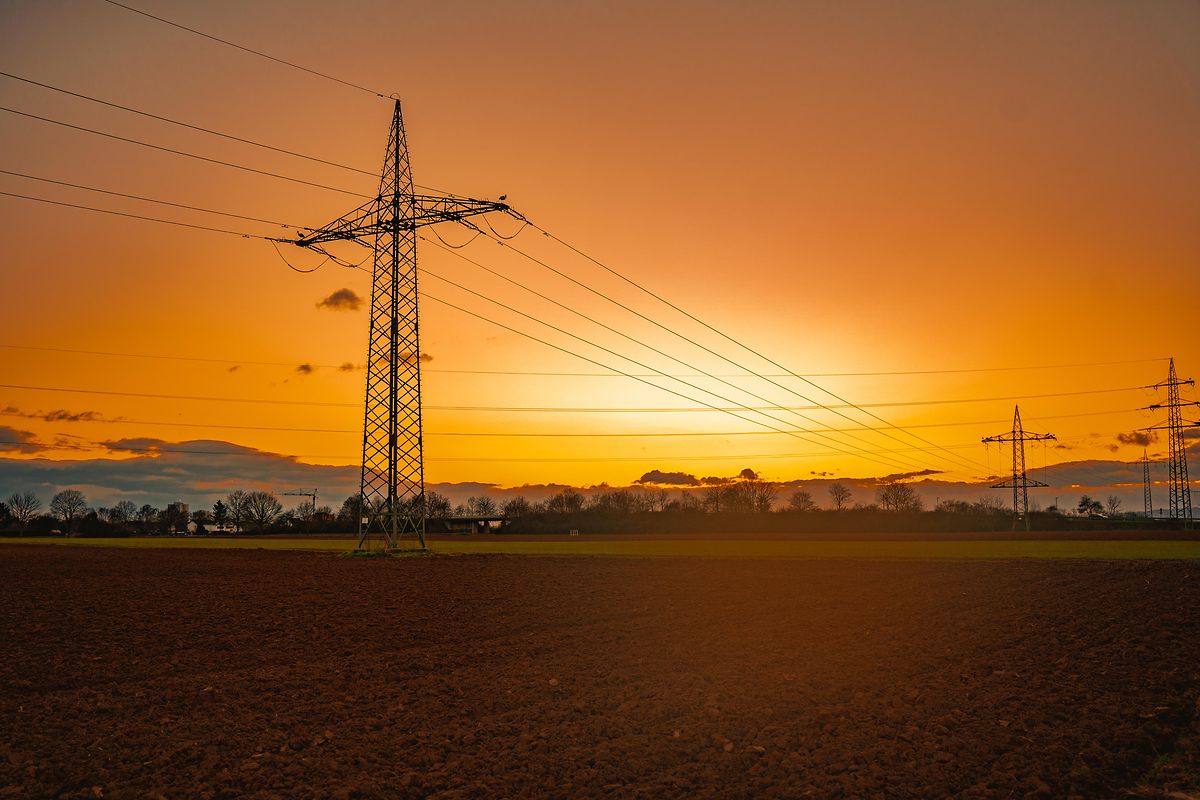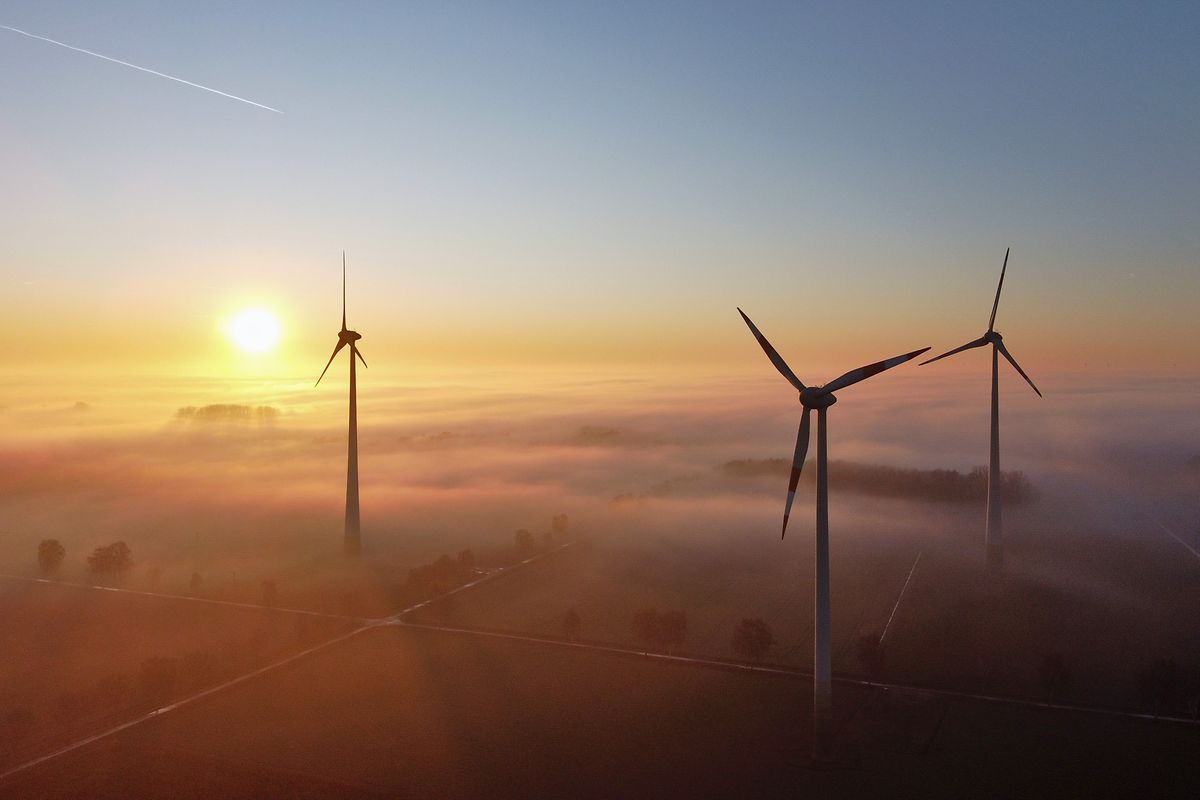Hint: This website is not optimized for your browser version.
Slight decrease in electricity consumption - Electricity generation and electricity trading in January 2021
8 February 2021 - Electricity generation and electricity consumption in Germany were down 3.8% and 1.4% respectively compared with the same month in the previous year. The wholesale price in Germany averaged €52.81 per megawatt hour (MWh), which was above the previous year's level; for the first time since November 2019 there were no negative prices. Overall, Germany was a net exporter.
Electricity generation from renewable and conventional energy sources totalled 46 terawatt hours (TWh) in January 2021 (2020: 47.8 TWh). While generation from conventional sources was 13.3% higher than in the same month last year, generation from renewable sources was 23.6% lower.
Total electricity consumption in January was lower at 43.6 TWh (2020: 44.2 TWh).
Highest and lowest outputs of renewable electricity generation
Electricity generation from renewable energy sources reached its highest level of 53.7 gigawatt hours (GWh) on Thursday 21 January between 11am and 12pm. This was the equivalent of about 66.3% of total generation (81 GWh) during this hour.
During this time onshore wind generation was high at 35.4 GWh (43.7% of total generation). Solar photovoltaic (PV) generated 8.7 GWh (10.7%), biomass 4.6 GWh (5.7%) and offshore wind 3.7 GWh (4.6%). The remaining 1.3 GWh (1.6%) was generated by hydropower and other renewables. Electricity consumption totalled 75.4 GWh during this time. Renewables therefore covered 71.2% of the electricity consumption, or grid load, during this hour.
Generation from renewable sources fell to its lowest level of 7.9 GWh on Saturday 9 January between 4pm and 5pm, when electricity consumption totalled 56.2 GWh. Biomass had the largest share among the renewables with 4.6 GWh (58.2%). Hydropower generated around 1.3 GWh (16.5%), onshore and offshore wind together generated 1.7 GWh (21.5%), and solar PV and other renewables generated the remaining 0.3 GWh (3.8%).
Overall, electricity generation from renewables in January was 23.6% lower than in the same month in the previous year. In particular, solar PV generation at 614 GWh was significantly lower than the previous year's level (down 44.1%). January 2020 was, however, characterised by dry weather and many hours of sunshine (national meteorological service (Deutscher Wetterdienst) – DWD), which explains the high level of generation from solar PV of 1,097 GWh. This January, by contrast, was characterised by rain and little sunshine.
The wholesale electricity price in Germany
Wholesale prices for electricity were higher compared to a year earlier. In January, the hourly products on the EPEX Spot day-ahead market were traded at between €0.02/MWh and €110.45/MWh and averaged at €52.81/MWh. This was €17.77/MWh higher than the average in January 2020 (€35.03/MWh).
The lowest exchange price was recorded between 4am and 5am on Thursday 21 January and was €0.02/MWh. During this time, the majority of electricity consumption (grid load) of 55.0 GWh was met by the higher level of renewable generation of 48.3 GWh.
On the day-ahead market exchange, the highest price of the past month of €110.45/MWh was recorded on Friday 8 January between 9am and 10am. The high price was due in particular to the relatively high electricity consumption of 65.8 GWh, which coincided in that hour with a low level of renewable generation of 11.7 GWh and a high level of conventional generation of 54.3 GWh.
There were no negative wholesale electricity prices on the day-ahead market in January, presumably because of the low level of renewable generation and the lower electricity consumption. This last happened in November 2019.
Wholesale prices in Germany | ||
January 2021 | January 2020 | |
Average [€/MWh] | 52.81 | 35.03 |
Minimum [€/MWh] | 0.02 | -8.77 |
Maximum [€/MWh] | 110.45 | 68.64 |
Number of hours with negative prices | 0 | 3 |
Data basis: smard.de
If the day-ahead price on the electricity exchange was negative for a period of six or more consecutive hours, the operators of larger new installations receiving payments under the Renewable Energy Sources Act (EEG) did not receive the market premium as from the first hour in the period with negative prices. The revised EEG, which entered into force on 1 January, shortened the period from six to four hours. The four-hour rule did not take effect in January because there were no negative wholesale prices.
Commercial foreign trade
Overall, Germany exported 3,602.4 GWh* more electricity than it imported in January, making it a net exporter. Germany had also been a net exporter in January 2020, exporting 4,234.6 GWh. Net exports were therefore 14.9% down on the same month in the previous year.
Changes in imports and exports are the result of price fluctuations and are part of normal market activity. They reflect the interaction of supply and demand throughout the whole of Europe. At what point in time electricity is imported or exported does not depend solely on supply and demand in the country in question, but also on the electricity prices in the other countries. Wholesale prices determined as a part of market coupling result from what are known as the relative generation costs, which vary over time. Wholesale prices are influenced by various factors, including the fluctuating wind and sun conditions, the cost of fuels and the cost of emission allowances.
Available transmission capacity at the national borders also plays a role. One example is ALEGrO, a new interconnector that has enabled trading between Germany and Belgium since November 2020. In January, net exports to Belgium amounted to 331 GWh.
Another example is NordLink, the first direct link between Germany and Norway, which is currently in trial operation and is scheduled to start full operation for commercial trading in the spring.
The chart gives an overview of Germany's commercial electricity trade. (Gross) exports are shown above the zero line and (gross) imports below the zero line.
Germany was a net importer in January from Denmark, among other countries, with net imports totalling 775 GWh (2020: 995.5 GWh). Trading between Germany and the Denmark 1 zone has been possible again since December. Trading had not been possible for several months because of maintenance work on the KONTEK interconnector.
Germany was also a net importer from Czechia, with net imports of 348.0 GWh (2020: 771.3 GWh), from Sweden, with net imports of 160.9 GWh** (2020: 384.8 GWh), and from Poland, with net imports of 123.5 GWh (2020: 34.7 GWh). One possible reason for the shift from net exporter to net importer in trading with Czechia and Poland is the wholesale prices in the two countries. Electricity from Czechia was less expensive than in Germany in 350 of the 744 hours of trading. This was the case in only 158 hours in January 2020.
Wholesale prices in Poland show a similar trend. In January 2021, electricity from Poland was less expensive in 323 hours compared with only 130 hours in January 2020, and so in more than twice as many hours as in the previous year.
___________________________________________________________________________________________________________________________
* The net exports referred to in the text also include commercial foreign trade with Belgium, which is not reflected in the chart. The net exports figure in the text may thus deviate from the net exports figure shown in the chart.
** These figures are based on incomplete data and may be updated when complete data are available.




